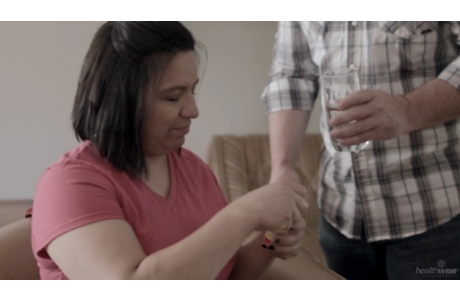Laparoscopic Tubal Ligation
Topic Overview
A tubal ligation is considered a permanent method of birth control. The fallopian tubes are cut or blocked, which prevents pregnancy by blocking the egg’s path to the sperm and uterus. Laparoscopy makes it possible to see and do the surgery through small incisions in the abdomen.
For a laparoscopic tubal ligation, the surgeon makes two small cuts (incisions)—one in or just below the belly button (navel) and one lower on your abdomen. The abdominal cavity, where the reproductive organs are, is inflated with air or a harmless gas so that the surgeon can see and avoid injuring abdominal organs or the inside of the abdomen.
The surgeon inserts a thin, lighted viewing tube (laparoscope) through the incision. The laparoscope has a lens that magnifies what the surgeon is viewing. The instrument that the surgeon uses to cut (ligate) the tubes may be inserted alongside the laparoscope or through the incision just above the pubic hair. The surgeon looks through the laparoscope while moving this instrument to get the tubes cut in the correct location.
Laparoscopic tubal ligation leaves small scars. Laparoscopy is the preferred method of surgery for women who:
- Are in good health.
- Are not greatly overweight.
- Do not have abnormalities of the pelvic organs, have never had abdominal or pelvic surgery, and have never had an infection of the pelvic organs such as pelvic inflammatory disease.
- Do not have endometriosis.
- Have not just had a baby (one incision at the navel is possible after childbirth).
The hospital or surgery center may send you instructions on how to get ready for your surgery, or a nurse may call you with instructions before your surgery.
Right after surgery, you will be taken to a recovery area where nurses will care for and observe you. In most cases you will stay in the recovery area for 1 to 4 hours, and then you will go home. In addition to any special instructions from your doctor, your nurse will explain information to help you in your recovery. You will likely go home with a sheet of care instructions and who to contact if a problem arises.
Mini-lap
A mini-laparotomy procedure (“mini-lap”) involves a smaller incision [usually less than2 in. (5 cm) long] than a regular laparotomy. The incision may be made just at or above the pubic hairline. The fallopian tubes are pulled up into or out of the incision, tied off, and then put back into place.
This procedure is favored for women who have had prior abdominal or pelvic surgery or who have heart or respiratory diseases.
A mini-lap may not be appropriate for women who are very overweight or who have a history of disease affecting the fallopian tubes, such as endometriosis or pelvic inflammatory disease (PID).
Current as of: May 29, 2019
Author: Healthwise Staff
Medical Review:Sarah Marshall MD – Family Medicine & Adam Husney MD – Family Medicine & Kathleen Romito MD – Family Medicine & Elizabeth T. Russo MD – Internal Medicine & Rebecca Sue Uranga
This information does not replace the advice of a doctor. Healthwise, Incorporated, disclaims any warranty or liability for your use of this information. Your use of this information means that you agree to the Terms of Use. Learn how we develop our content.





